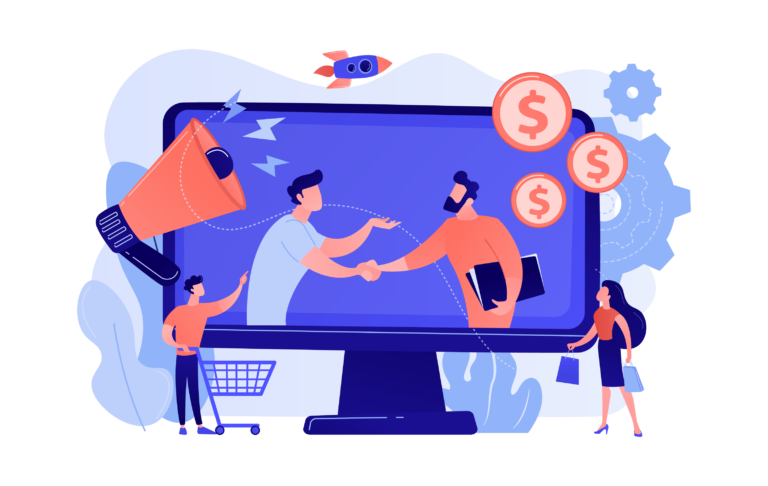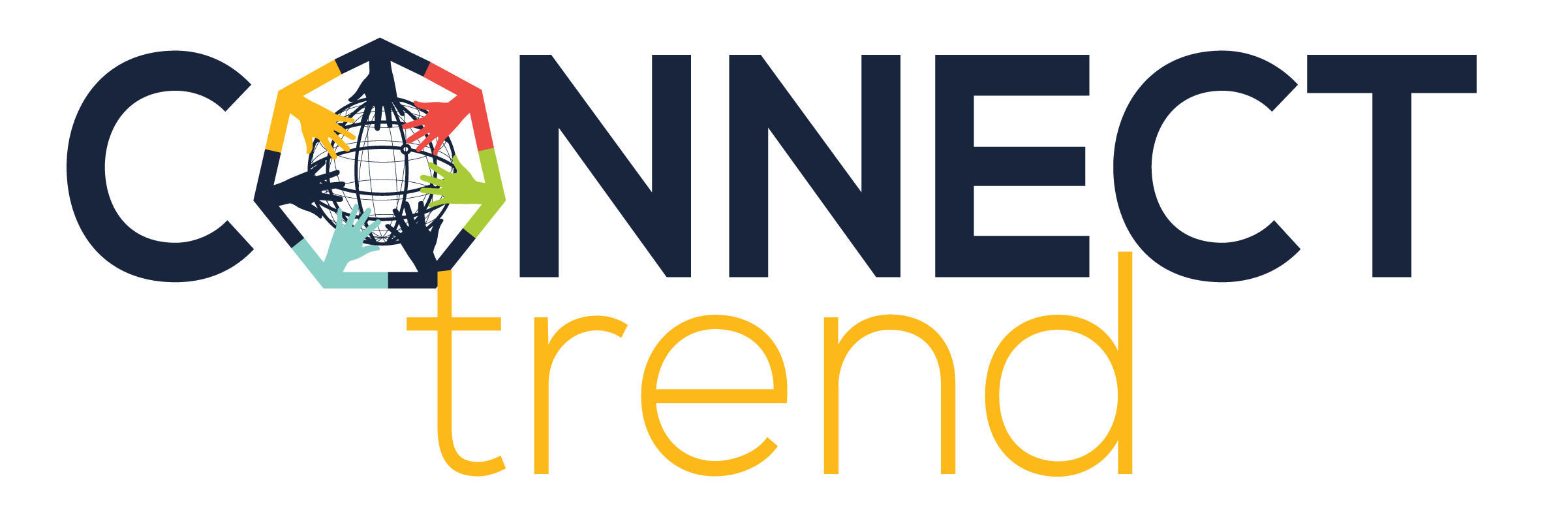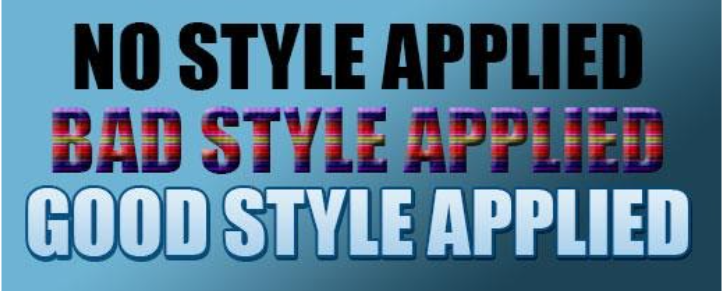Discover The Insider Secrets
To Wildly Profitable Webinars!
Webinars are an excellent way to increase sales and conversions, especially on big-ticket items. Because webinars are interactive, they are more engaging and thus have higher conversions than other types of marketing.
A few benefits of webinars over other sales presentations include:
- The limited time nature increases participation. People can’t procrastinate if a webinar is only available at a specific time.
- Active participation in the form of chat, question-and-answer sessions, etc. makes for a richer, more engaging experience that makes people pay attention and take action.
- Social proof from other participants can increase conversions.
In this report, you’re going to learn how to set up and run successful webinars, with a focus on selling high value items that pay a higher commission than average products. You’ll learn how and why you should run automated webinars, and how to increase webinar conversions.
So let’s get started.
What You Will Learn
- Selling High Ticket Items via Webinar
- Automated Webinars
- Planning a Webinar (Structure, Pitching an offer)
- Planning the Presentation
- Plan Attendees
- Create the Agenda
- Schedule Presenters
- Plan a Dry Run
- Fine-Tuning Your Pitch
- Pre-Qualifying Participants

WANT TO GENERATE INCOME
365 DAYS EACH YEAR?
This plug and play software runs on auto-pilot, 24/7. Sounds too good to be true? Check for and see for yourself!
Selling High Ticket Items via Webinar
Webinars can certainly increase sales to smaller ticket items, however generally speaking they are much more cost-effective for selling high-ticket items.
The main reason why these big-ticket items make more sense is because of the limited nature of webinars. Most webinar programs only have a limited number of seats available, generally due to the limitations of the software itself, which might not be able to handle large numbers of users at once.
Because there are so few people who will be able to attend each webinar session, it only makes sense to promote higher ticket items. If you are only paid $10 commission on a small ticket item, and you only have 50 attendees, you’d need a 20% conversion rate to make 10 sales, which would only earn you $100 in commission.
That’s not exactly a princely sum for the trouble of planning, organizing and carrying out a webinar. And remember, a 20% conversion rate is very difficult to achieve even with a webinar.
However, if you were paid $100 commission on a large-ticket item, with the same 50 attendees, you’d only need a 10% conversion to get 5 sales, which would earn you $500 in commission.
As you can see, you’d need half the conversions to earn five times as much income. So large-ticket items really make sense when you have a limited number of people to market to, such as you do with a webinar.
Not only must you worry about the physical limitations of your webinar software and server, but the schedules of potential attendees as well. You may see fewer attendees than you expect because people are busy at the time you schedule your webinar.
It’s possible to record your webinar and distribute it to people who cannot attend, however conversions on recorded webinars aren’t likely to be nearly as high as during the live broadcast, because you can’t have viewers of the recorded webinar interact with you as they could during the initial live broadcast.
Doing the Math – Before you plan your webinar, it’s important to do a little math to be sure your webinar has the best chance to be profitable. (In other words, worth your time.)
First, figure out which product you’d like to promote. Ideally, this should be a product that you’ll make at least $100 in commission from, though higher amounts would be even better, obviously.
However, don’t choose a product solely based on its commission. It’s better to choose a product that makes a bit less commission and converts much better than to choose a product that has a very high commission and won’t convert at all.
Let’s say your product will make you $100 in commission. If you want to make at least $500 from the webinar, you know you need to get a total of five sales.
You may not know the exact conversion rate of your product, but you can estimate it. A 5% conversion rate is a good starting point as an estimate. It helps greatly if you’ve tested the product already, or if the product owner has released public information about its overall conversion rates, but 5% is generally a safe estimate for most products.
In order to get five sales at a 5% conversion rate, you need a total of 100 people in attendance. You could make more, or you could make less. But getting a minimum of 100 people to attend would be your goal.
If you have a high-converting product that gives you $500 commission, you would only need one sale to earn what you desire. This means a higher-priced product would require much fewer attendees.
Automated Webinars
Automated webinars make it easy to set up webinars at times when you cannot theoretically be in attendance. This is great for providing access to people on varying schedules and all around the world without having to be there constantly.
You may wonder why it makes sense to do an automated webinar when you could simply do a single webinar, record it, and offer access to a video
There are many reasons to use an automated webinar system instead of simply offering a video recording:
- People are much more likely to attend when they feel they are on a time constraint because they don’t want to miss the event. If they are given a link to download a video, they are likely to put off watching the video until “later”, but “later” is likely to never come. People tend to procrastinate unless they have a set timeframe for something.
- People tend to perceive the value of a live webinar as much higher than the value of a single video, even though the information is technically precisely the same.
- A video recording does not allow audience participation of any kind. Some automated webinar scripts allow audience members to chat with one another and also chat with you if you are available at the moment.
- A recorded video cannot be set to play at a specific time so that late attendees believe they are attending a live webinar. However, with some automated webinar software, the video will begin at a specified time, and if people are late or leave and come back, the video will not resume from the same place they left off, giving the impression of a live broadcast.
There are many different automated webinar systems available. Here are a few of the most popular.
>> http://www.EvergreenBusinessSystem.com – The Evergreen Business System is one of the most popular automated webinar systems. At $497. This system delivers a tremendous number of features, most of which cannot be found elsewhere. For an additional $97 monthly fee, you can also run an unlimited number of live webinars using their servers.
>> http://www.StealthSeminar.com – The Stealth Seminar system charges as $97 registration fee (after coupon), and then an additional $69.95 per month. While this is cheaper upfront than the Evergreen Business System, you will find that it lacks some of the features people want in a webinar host. However, it does integrate with almost all major autoresponder systems.
>> http://www.EasyWebinar.com – Easy Webinar is only $297 for a 10-domain license. It is less costly than other systems, but again it doesn’t have quiet as many features as the two listed above.
Planning a Webinar (Structure, Pitching an offer)
Planning the full webinar before it begins is absolutely essential. Without proper planning, you’re likely to end up with long periods of dead air or being unable to answer questions posed by attendees, which can throw off your webinar and cost you conversions/sales.
Webinar Formats – There are several different formats you can choose from for a webinar. Different formats have different benefits, so you may want to use different formats at different times based on your needs.
Let’s take a look at some of the various formats and their benefits and weaknesses:
Single Speaker – In the single speaker format, one person does the complete presentation and may ask the attendees questions or answer theirs.
One major benefit of this particular webinar type is that you won’t have to train multiple people how to use the webinar software. Additionally, you don’t have to worry about timing and coordinating multiple speakers, or having presenters talking over each other answering questions.
The biggest potential drawback of the single speaker format is that sometimes people are reluctant to interact with a single speaker, because they feel it can be a bit intimidating, because the single speaker becomes somewhat of an authority figure. However, this is also potentially beneficial, because if you are seen as an authority figure, people will be more likely to take actions you recommend or request, such as buying a product.
Interview Style – The interview style webinar involves two or more people working together. One person is usually the interviewer, and that person interviews one or more other people.
Some people find that hearing several people at once helps make a webinar more interesting. Also, since the interviewer is asking the other person questions, many times this encourages attendees to ask questions, increasing interactivity.
This means you’ll have to ensure everyone is able to use the webinar software, including the interviewer and all interviewees. You may also run into scheduling conflicts, because you will have to coordinate multiple people to run the webinar.
Moderated Panel – A moderated panel has several people online at the same time with one moderator who ensures only one person can speak at a time. This is done either through the software itself, allowing the moderator to mute everyone who isn’t currently speaking, or in the same way a moderator facilitates a live discussion, by giving individuals permission to speak.
Like the interview style, this type of webinar allows users to hear different perspectives and different voices, which makes the webinar more interesting than a single speaker style.
However, as with an interview style, you’ll have to ensure all parties know how to use the webinar software and be careful of any scheduling conflicts. But perhaps the biggest challenge with this format is keeping the conversation flowing well without people talking over each other. The moderator must take great care to keep things organized.
Interactive – The interactive format requires a single individual to lead the attendees in various activities such as question-and-answer sessions, lessons or other interactive content.
Because this format is extremely interactive, people generally get more out of the webinar. Attendees can ask questions, and even answer questions for other attendees. This can be very helpful if someone asks a question that you don’t know the answer to.
The main problem with this format is that it can really only reasonably accommodate a small number of individuals, because large groups can cause a lot of confusion if everyone is trying to speak at once. You need to be reasonably skilled at running this type of webinar for it to work effectively.
Planning the Presentation
You will need to plan your presentation carefully from start to finish, and you won’t want to deviate from that format too much during your webinar. The reason for this is that once a webinar has been derailed, it can take a long time for it to recover and get back on track, thus making your webinar run over time.
Since people have to plan to be present at a particular time for a webinar event, they generally don’t allot time over that. They may make plans after your webinar, and if it runs over, they may have to leave. Or they may just get bored if the webinar runs too long.
Here are some things you might want to include in your presentation:
- A slide that introduces your webinar, including its purpose, what time it begins, how to use the various webinar functions, and how long the webinar is estimated to last.
- A slide that gives information about the webinar host/presenter and any other presenters, interviewers or interviewees. Include their name, their professional credentials, and a picture if you have one.
- A short presentation of the webinar’s agenda, including the topics to be covered and any other material to be presented.
- Screenshots or videos that demonstrate primary elements of your presentation. You may be able to keep these on your computer and present them as needed, as some webinar software allows you to share your desktop so everyone can see what you’re doing live as you do it. This will let you show videos, slides, screenshots or whatever else you need to display.
Plan Attendees
Keep in mind that a lot of webinar software has hard limits on the number of attendees. This is due to a number of different factors, such as bandwidth, software limitations, etc.
If you know you have a limited number of spots available, be sure to let potential attendees know this in advance. This will help increase the number of people who sign up for your webinar, because it will lend an element of scarcity.
Record the Presentation – It’s a very good idea to record the webinar to allow those who could not be in attendance to view it at a later date. This will increase your conversions, because you will be able to reach more people than could be present due to their own scheduling conflicts or due to the space limitations for the live presentation.
If you’re going to record the webinar, you’ll want to plan this in advance so you can be certain your webinar software allows recording, and to learn how to use the function properly.
Create the Agenda
It is very important to create an agenda with approximate times so that the webinar flows smoothly and doesn’t go too much over time. Remember, if you run over time, you won’t make it to your final sales pitch with some participants, which will severely cut down on conversions.
Your agenda should contain a list of topics that you plan to discuss during the webinar so that you don’t forget any important points.
The agenda should also contain a rough guide for each segment of the presentation, including the order in which speakers will make their presentations, a list of interview questions, etc.
Here’s a sample agenda for a webinar beginning at 6:00 PM:
6:00 – Introduction to the webinar and its presenters.
6:05 – First topic of discussion.
6:15 – Second topic of discussion.
6:25 – Third topic of discussion.
6:35 – Questions from the audience.
6:50 – Product is introduced, letting people know their unanswered questions can be answered by it. This is the sales pitch.
7:00 – Webinar is concluded, attendees are thanked for their presence, and the final sales pitch is made.
Schedule Presenters
If you intend on having any special guests, additional presenters, experts, or interviewees, you need to schedule them well in advance so they are certain they can be present and on time for the webinar.
Don’t forget to schedule all presenters for a trial run, too. This should be done at least once before the day of the webinar in order to ensure everyone knows how to use the software properly and that everyone knows their role and can stick within the time constraints.
Plan a Dry Run
A trial run is absolutely vital for ensuring your webinar goes smoothly. There isn’t much that will kill a webinar’s effectiveness faster than a bunch of people saying “um” and “uh” every couple of minutes because they don’t know what they’re doing or what should happen next.
It’s a good idea to do two or three dry runs, but you must do at least one. The dry run will help ensure everyone knows how to use the webinar software correctly, the order of events, what they plan to say, and how to stay within time constraints.
You won’t be able to plan for things such as user questions as well, but you can anticipate some of the things attendees might ask and be prepared to answer those questions.
The dry run should include, at minimum:
- Practice the webinar introduction, including introducing individual presenters.
- Making sure presenters know how to use the webinar software.
- Check all software and equipment. Make sure the web server is running optimally. Be sure everyone has working headsets and knows how to use them and mute them when necessary.
- Go over the complete agenda with all participants. Do a run-through of all presenters’ presentations, including visuals such as screenshots and videos.
Fine-Tuning Your Pitch
The most important part of your webinar is obviously your pitch. This pitch must be as finely tuned as possible before the webinar begins, and it must contain the perfect blend of selling versus informing.
If the product is yours, you can be a little more aggressive with your sales pitch. People will expect this if you’re selling your own product, so they won’t really be upset.
However, if you’re selling an affiliate product, people are likely to be rather skeptical about the product if you’re selling too hard. Instead, try to focus on talking about why you personally like the product rather than just saying, “Buy! Buy! Buy!”
Here are some things you might want to include in your sales pitch:
- A few of the most important features of the product
- The best benefits of the product (Remember, benefits are different from features. Features would be things like a server’s bandwidth or hard drive size. Benefits would be no loss of sales due to bandwidth limitations or never running out of server space for critical backups.)
- What the product has done for you personally
- Why you believe everyone would want the product
Be careful not to oversell the product or people will smell the sales pitch a mile away and won’t feel it is genuine. The more personal it seems, and the more you relate to them what it has done for you, the more people will want to buy it.
Pre-Qualifying Participants
Something you may want to do if your webinar is very limited is to pre-screen potential attendees to be sure they understand the product you are presenting, its basic features and its price. You don’t want valuable webinar spots being taken by people who would have absolutely no interest in the product you’re selling or wouldn’t be able to afford it even if they were.
Thus, before your signup form, you might want to include a short survey asking people questions that pre-qualify them for your webinar.
Some example questions for a weigh loss webinar might include:
- Are you interested in losing 50, 75, even 100 pounds or more in the next six months?
- Have you tried other weight loss products and failed?
- Are you sick of weight loss systems that try to charge you a monthly fee on and on, yet they never work?
- If you could pay a one-time fee of just $497 to lose all the weight you want, and be guaranteed success, would you be interested?
This will ensure participants are both interested and willing to pay the cost of the product.
Final Words
Webinars can be extremely profitable if care is taken with the setup, presentation, and pitch. Remember that they are best used for pitching high-value products that pay a larger commission in order to take advantage of the limited nature of most webinar software.
Remember, you can continue making money long after your webinar has ended by allowing others to view the recording of it. But don’t forget that your webinar’s effectiveness will diminish significantly if you only offer a standard video stream or download of your broadcast.
Instead, consider using one of the automated webinar systems that make your broadcast seem like a live event. This will increase urgency and ensure that more people will view your recorded webinar and take action, too.
I wish you the best of luck with your webinars, and I hope you find wild success with all your future webinars!
Good luck!



